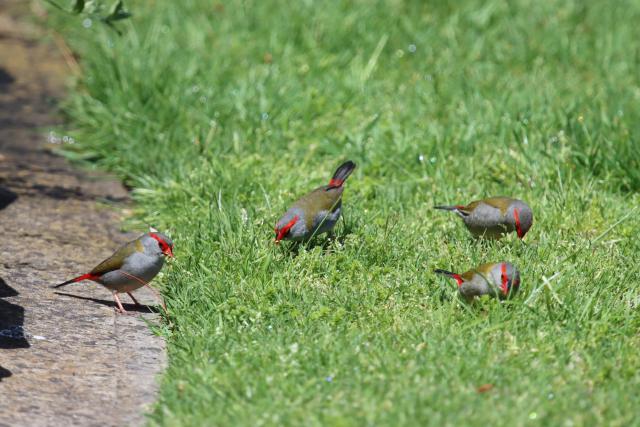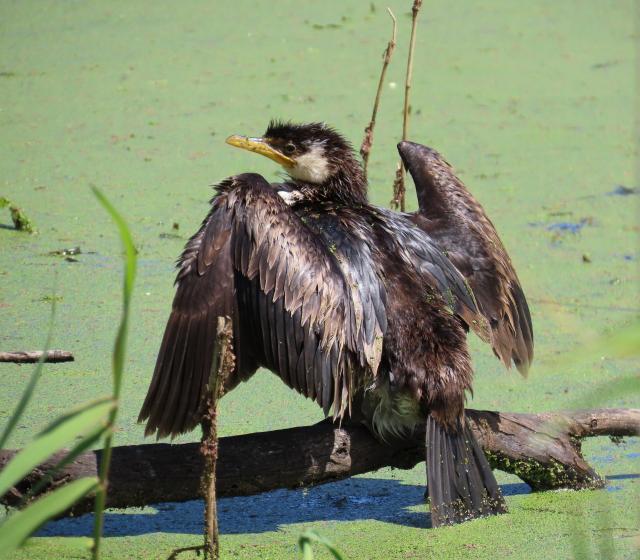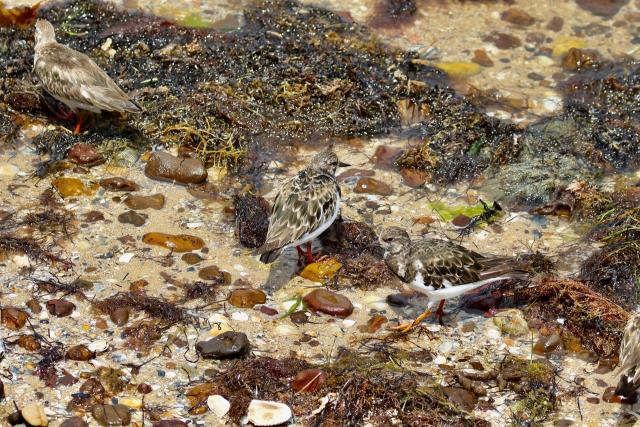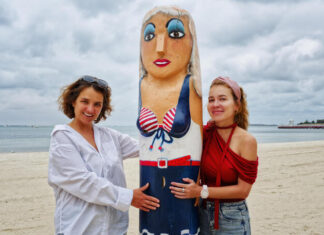I’ve seen newly hatched Pacific black ducklings in an ephemeral pond in the new housing estate on Banks Road, as well as royal and yellow-billed spoonbills feeding in the water, well hidden by the long grass.
Tom Fletcher, who lives in Ocean Grove, informed me that he had a pair of common bronzewings nesting in his front garden, so I called around to check out the nest, which turned out to be a flimsy pile of thin sticks placed in a bough of a large gum tree, only about a metre or so from the ground.
The male bird of the pair was sitting on the eggs when I photographed them, and the female was wandering on the ground feeding herself.
The male common bronzewing has a pale-yellow forehead and pink plumage on the breast, and both sexes have a white line below and around the eye and beautiful patches of green, blue, and red plumage on the wing.
Unfortunately, Tom informed me a few days later that the nest had failed, maybe due to fox or cat activity. Tom had surmised that the nest was not in a great location and was too close to the ground, so he was not surprised when the nest was predated.
I had a close encounter with a swamp harrier a few days ago, which was exciting as they are a bird that is very hard to get close to.
I was sitting in my car at Point Henry, near the Winchester factory, as I’d seen a wedge-tailed eagle flying in the distance.
A swamp harrier came into view flying over a boundary fence, moving directly towards the car. Usually, swamp harriers will see the car in the distance and take a U-turn, but this bird was very focused at looking at the ground for prey, so it just kept soaring towards me. It only noticed me when it was about five metres from the car, and it gave me eye contact before turning sharply to the left.
This bird was very pale brown, and swamp harriers become paler in plumage with age.
I received an email from Andrew, who sent some images of a couple of dusky moorhen chicks and a little pied cormorant at Blue Waters Lake.
Andrew also informed me that he saw a magnificent, white-bellied sea eagle flying over Shell Road near Clows Rd, heading in the direction of Lake Victoria, while he was out cycling. Andrew has also been cycling near the Breamlea Wetlands and has seen a brolga on two separate occasions.
I received an email from John in Leopold. Recently John dug a trench to expose his neighbour’s peppercorn tree roots, and he was astonished to find that a spotted pardalote had burrowed the soil to make a nest in the ground. The nesting burrow was located under the roots of a privet hedge.
After John had dug the trench and exposed the nest, the spotted pardalotes waited patiently for a safe time to enter the nest and incredibly allowed John to come within a metre of them to take a photo using his phone camera.
The birds did not abandon the nest despite the disturbance. John has lived on the Bellarine Peninsula for a long period of time, and he told me that in the late 1950s he observed nesting pardalotes in the limestone cliffs on private property along Wallington Road.
John also had a flock of around 10 red-browed finches visit his property. These birds would be loving the rain and the quick growing grass, as they feed on grass seeds. They are easily recognised by the bright and striking red eyebrow, rump, and beak, on an otherwise olive-green plumage.
I received an email from Kevin, who ventured to St Leonards to check out the migratory shorebird known as a ruddy turnstone. These birds can be seen on the beach in St Leonards, camouflaging in the sand and seaweed.
Kevin used to see more of these birds in this location in previous years. Kevin said that he didn’t see much more of note in the area except for a couple of crested terns and some silver gulls, and Edwards Point didn’t yield much more, possibly partly due to an onshore wind.









